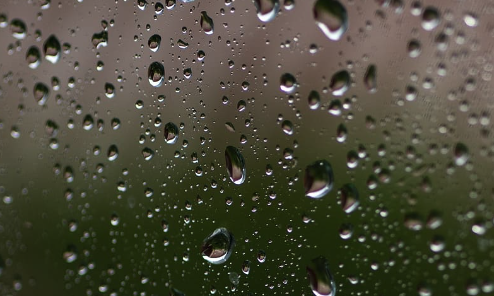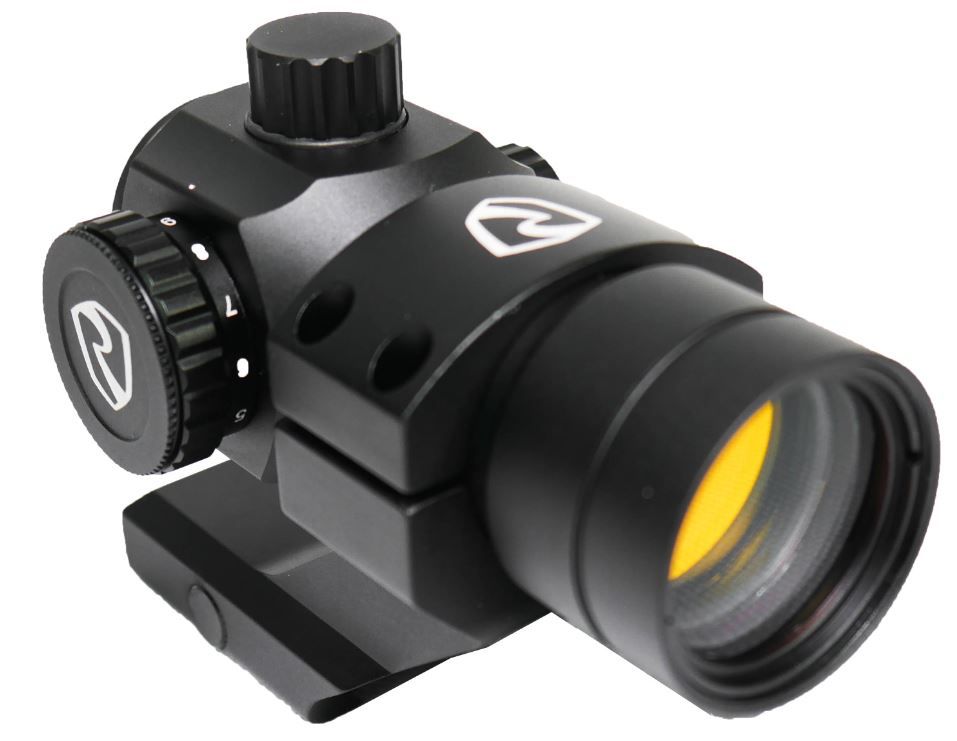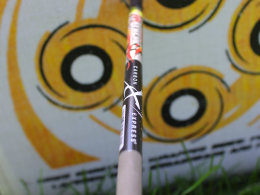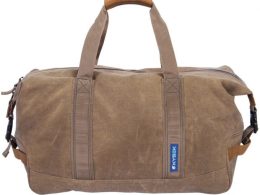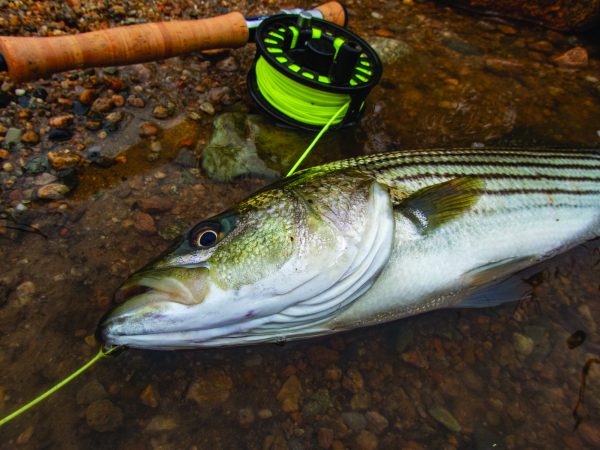Spring is the time for bird watching, turkey hunting, and target shooting. Unfortunately, it is also time for rain or other foul weather. Wet weather, high humidity, and optics do not always mix well. If you prepare, however, the rain will not spoil your optics and therefore, your outing.
In this article, we will look at waterproof versus fog proof optics, maintenance, and foul-weather accessories to keep your optics dry.
Table of Contents
Waterproof?
Early optics featured little resistance to rain and moisture and had to be kept dry, usually by removing the scope from the rifle and keeping it in a case. Same for binoculars and telescopes. Later, scopes like the Lyman Alaskan featured O-rings or rubber gaskets to prevent the ingress of water into the optic. This worked decently well and helped somewhat with preventing internal fogging. What it did not prevent was complications from the moisture already present in the body of the optic.
Bringing a scope or pair of binoculars from a cold and wet environment into a warm one (and vice versa) would cause the moisture present in the device to condense. If there was enough moisture present, then fungus could develop. I once bought a Weaver K6 that looked like it had oil on the inside of the lenses. After disassembly and cleaning, I discovered that the reason the oil was present was an attempt to remove mildew and fungus growth from the inside. I was able to get all the residue off, but the fungus had etched the glass, leaving it slightly blurry in parts. Just because something says waterproof does not mean that it is worry-free.

Fog Proof
In 1947 Leupold brought a revolutionary scope to market. Called the Plainsman, it claimed to be the first fog-free scope made in America. How? By filling the tube with nitrogen gas. The gas displaced the oxygen inside and removed all the moisture. As long as you didn’t take the thing apart, it would remain sealed. Nitrogen purging was an important development in optics. Since the nitrogen is under higher pressure than the atmosphere outside, nothing can get in. This makes all fog-proof optics fully waterproof as well. External fogging can still occur, but it will not harm your optic.
Maintenance
A rifle scope is only as good as the care given to it. A thorough check-over of your optic will ensure that it stays in good working order despite the weather. The primary areas to check are the adjustment turrets/caps, objective lens, ocular lens, and if applicable, the battery compartment.
Turrets
The adjustment dials of a scope are the functional heart of the optic. If they do not work, then the scope is useless. Check over this area carefully. For exposed adjustment knobs, make sure that no debris has gotten up under between the knob and the body of the scope. For optics with capped adjustment dials, check over the caps for cracks or splits. If the cap(s) are missing, I recommend looking for a set on eBay. Pay close attention to the seals. If they are O-rings, look for cuts or tears. If the seals are rubber gaskets, then look for splits or rips. Also, remember that the caps do not need to be incredibly tight, just snug. Over-tightening will shorten the life of the gasket.
Objective Lens
On the front end of the scope, check for damage to the tube that could compromise the seals. Then check the threaded ring inside the ocular bell that retains the lens. Damage to the objective bell can crack the ring and possibly compromise the weather resistance of the scope. Take the time to clean the lens while you are here using a microfiber cloth. If the optic has an adjustable objective, take the time to check over the rotating portions for damage and debris.
Ocular Lens
Depending on your scope, the first part of checking the ocular lens is the same as the objective lens. After examining the bell and the threaded ring, check over the locking ring that secures the bell in place. Look for cracks and verify that it is snugly in place. Some scopes, like the venerable Bushnell Banner series, have an adjustable ocular lens that moves separately from the bell. Make sure that no junk has gotten in there.
Battery Compartment
Rifle scopes or red dot/reflex optics that use batteries take extra care in their maintenance. Check the seals and caps as you would do for the adjustment turrets. Then observe the compartment itself. Look for signs of corrosion or battery leakage. Now would be a good time to change the battery or remove it for storage. Any moisture that enters this compartment is a recipe for a dead optic if left unaddressed. If you find corrosion, I recommend returning the device to the manufacturer for service. Depending on the device warranty, you may have to pay for this, but corrosion is very hard to remove from a battery compartment (especially ones for those flat round batteries), and any battery you put in afterward is very likely to begin corroding as well.
Wet Weather Accessories
Nothing can ruin a chance at a trophy faster than a lens full of raindrops or snow. There are several types of scope covers and caps available that will help keep your optics clear and dry; scope caps, flip-up caps, scope covers, and bikini covers. The downside to most of these is the need to remove them before you can use your scope.
Scope Caps
These are the elastic cord joined plastic covers that come with most optics from the factory. They work well in light rain or gently falling snow. They need to fit snuggly to keep out the weather. The elastic seems to wear out quickly, so I would not view these as a long-term option if used frequently.
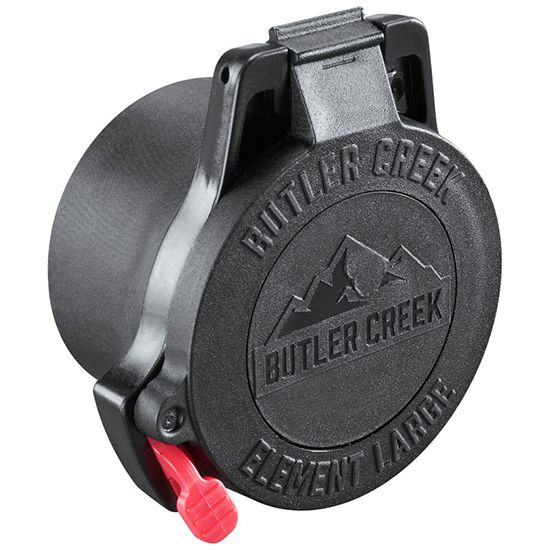
Flip Up Caps
These things sprouted like perennials on seemingly every deer rifle scope in my extended family. Flip-up caps can be flicked open easily when you are ready to shoot and keep out all but the worst weather. I have Butler Creek caps on most of my scoped rifles and I like them. The downsides to them are that they pop open randomly, like when they brush against your pack while your rifle is slung, and if you are hunting in a continuous downpour, the water will eventually get in. If you are the slightest bit ADD, the covers make a great fidget, so I leave mine open during fair weather to avoid distraction. There is a fit chart for most of these online. Follow it. If the cap presses on your scope without effort, try the next size down or add a wrap or two of tape to the scope bell. I learned this from experience last deer season. I arrived at my hunting spot and realized that the cap from the ocular bell (which had slid on easily) was somewhere in the mile between my truck and me. I never did find it back on the way out.
Scope Covers
Scope Covers are tube-like sleeves that fully enclose the scope, and keep it out of the weather. These are usually made from neoprene and are great for older optics that may not be waterproof. I consider them mandatory for exposed lens reflex sights like Eotechs that go blurry with just a bit of rain on the screen. The neoprene also provides some cushion and protection to the scope. A plus if you are hunting in rocky areas. Full covers are slower than caps to remove, but if you are hunting in open country where you have the time to get into position and get ready, they are one of the best options.
Bikini Covers
Created by Butler Creek, the Bikini-type scope covers are made of soft rubber and consist of two cups that cover the ends of the scope joined by rubber bands. The covers are molded as one piece and are very durable. The softness of the rubber creates a tight seal on the ends of the scope, and I have heard that they are the only thing that works when hunting in an Alaskan downpour. A small grab tab is on the rear cover for fast(ish) removal. The bikini covers are relatively inexpensive and are a good option for keeping your lenses clear on a truly waterproof scope.

Sunshade
Adding a sunshade extension to your scope is another way to reduce how much precipitation that may find your lenses. The extra length makes it hard for the rain to get in (provided that the scope is level).
Final Thoughts
Wet weather and optics are not good companions, but precipitation does not have to spoil your outing. If you take the time to prepare and equip your optics, you will still have a good hunt. If you do get a lens full of water or snow, do not worry, brush out the snow and dry the lens with a microfiber or chamois cloth.
If you have a scope that has gotten moisture damaged, don’t give up on it, many companies have warranty repair services. If no warranty service is available for the optic, some of the older non-nitrogen purged scopes, like a Weaver K series, can be disassembled and cleaned by the average individual after watching a few YouTube videos. There are professional (and pricey) restoration services out there as well if the optic has sentimental value.
The bottom line is that with a little bit of preparation, your scope will keep working well regardless of the weather.

